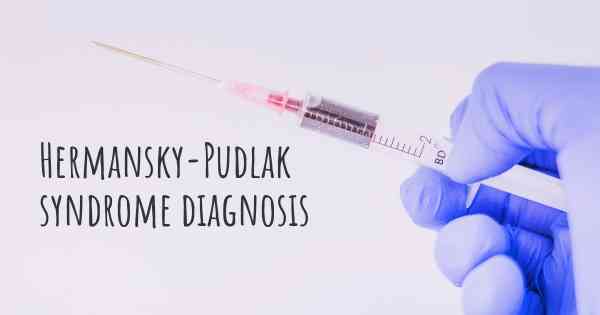How is Hermansky-Pudlak syndrome diagnosed?
See how Hermansky-Pudlak syndrome is diagnosed. Which specialists are essential to meet, what tests are needed and other useful information for the diagnosis of Hermansky-Pudlak syndrome

Diagnosing Hermansky-Pudlak Syndrome
Hermansky-Pudlak Syndrome (HPS) is a rare genetic disorder that affects various organs and tissues in the body. It is characterized by a combination of symptoms including albinism, bleeding disorders, and other health complications. Diagnosing HPS can be challenging due to its rarity and the variability of symptoms among affected individuals. However, there are several key diagnostic methods that healthcare professionals utilize to identify this syndrome.
1. Clinical Evaluation
The initial step in diagnosing Hermansky-Pudlak Syndrome involves a thorough clinical evaluation. A healthcare provider will review the patient's medical history, including any symptoms or abnormalities observed. They will also conduct a physical examination to assess the presence of characteristic features associated with HPS, such as albinism, visual impairment, and bleeding tendencies.
2. Genetic Testing
Genetic testing plays a crucial role in confirming the diagnosis of Hermansky-Pudlak Syndrome. This involves analyzing the patient's DNA to identify specific genetic mutations associated with HPS. The most common genes implicated in HPS are HPS1, HPS3, HPS4, HPS5, HPS6, and HPS7. Genetic testing can be performed through various methods, including sequencing the entire coding region of these genes or using targeted mutation analysis.
3. Ophthalmologic Examination
Since visual impairment is a common feature of HPS, an ophthalmologic examination is often conducted. This examination assesses the structure and function of the eyes, including visual acuity, color vision, and the presence of nystagmus (involuntary eye movements). Ophthalmologists may also perform additional tests such as electroretinography (ERG) to evaluate the response of the retina to light stimulation.
4. Pulmonary Function Tests
Hermansky-Pudlak Syndrome can also affect the lungs, leading to pulmonary fibrosis and restrictive lung disease. Pulmonary function tests are conducted to assess lung capacity, measure airflow, and determine the efficiency of gas exchange. These tests may include spirometry, lung volume measurements, and diffusion capacity assessments. Pulmonary function tests help evaluate the severity of lung involvement and monitor disease progression.
5. Platelet Function Testing
One of the hallmarks of HPS is a bleeding tendency due to platelet dysfunction. Platelet function testing is performed to evaluate the ability of platelets to form clots and prevent excessive bleeding. This may involve tests such as platelet aggregation studies, bleeding time assessments, and platelet electron microscopy. These tests help identify platelet abnormalities and differentiate HPS from other bleeding disorders.
6. Biopsy and Electron Microscopy
In some cases, a biopsy of affected tissues may be necessary to confirm the diagnosis of Hermansky-Pudlak Syndrome. Skin biopsies or biopsies of other affected organs can be obtained and examined under an electron microscope. This allows for the visualization of characteristic findings, such as abnormal melanosomes in albinism or abnormal platelet dense granules.
7. Consultation with Specialists
Given the multisystem nature of Hermansky-Pudlak Syndrome, it is often beneficial to involve various specialists in the diagnostic process. These may include dermatologists, hematologists, pulmonologists, ophthalmologists, and geneticists. Collaboration among these experts helps ensure a comprehensive evaluation and accurate diagnosis of HPS.
In conclusion, diagnosing Hermansky-Pudlak Syndrome involves a combination of clinical evaluation, genetic testing, specialized examinations, and consultations with specialists. The identification of characteristic features, genetic mutations, and abnormalities in various organs and tissues aids in confirming the diagnosis. Early diagnosis is crucial for appropriate management and treatment of individuals with HPS.








